"The combination of high protein binding capacity and ease of use makes the PureCube Ni-INDIGO resin our go-to product when it comes to Ni-affinity purification.
The resin seems to retain its full protein binding capacity even after 30 uses when each purification is followed by the recommended CIP protocol. The INDIGO technology allows you to clean the resin with 0.5 M NaOH without stripping the Nickel thus eliminating tedious resin metal ion stripping and recharging. We would highly recommend PureCube Ni-INDIGO resin to anyone doing Ni-Affinity protein purification."
Time-saving PureCube Purification Technologies
Benefit from affinity beads developed by experts with 30 years of experience
Technologies: His-tag Ni-INDIGO | Ni-NTA | Rho1D4-tag | Strep-tag | Surface groups
Technology 1: His-tag Affinity
Highest protein yields due to Ni-Leakage resistant beads
PureCube Ni-INDIGO Agarose and MagBeads

Figure 1: Yield of recoverd GFP in a purification batch process with CubePure Ni-INDIGO Agarose with different tested additives 0.1M Citrate, 20 mM DTT, 6 mM GuHCl, 8 M GuHCl, 10 TCEP, 2% Titron, 8 M Urea, 20 mM EDTA.
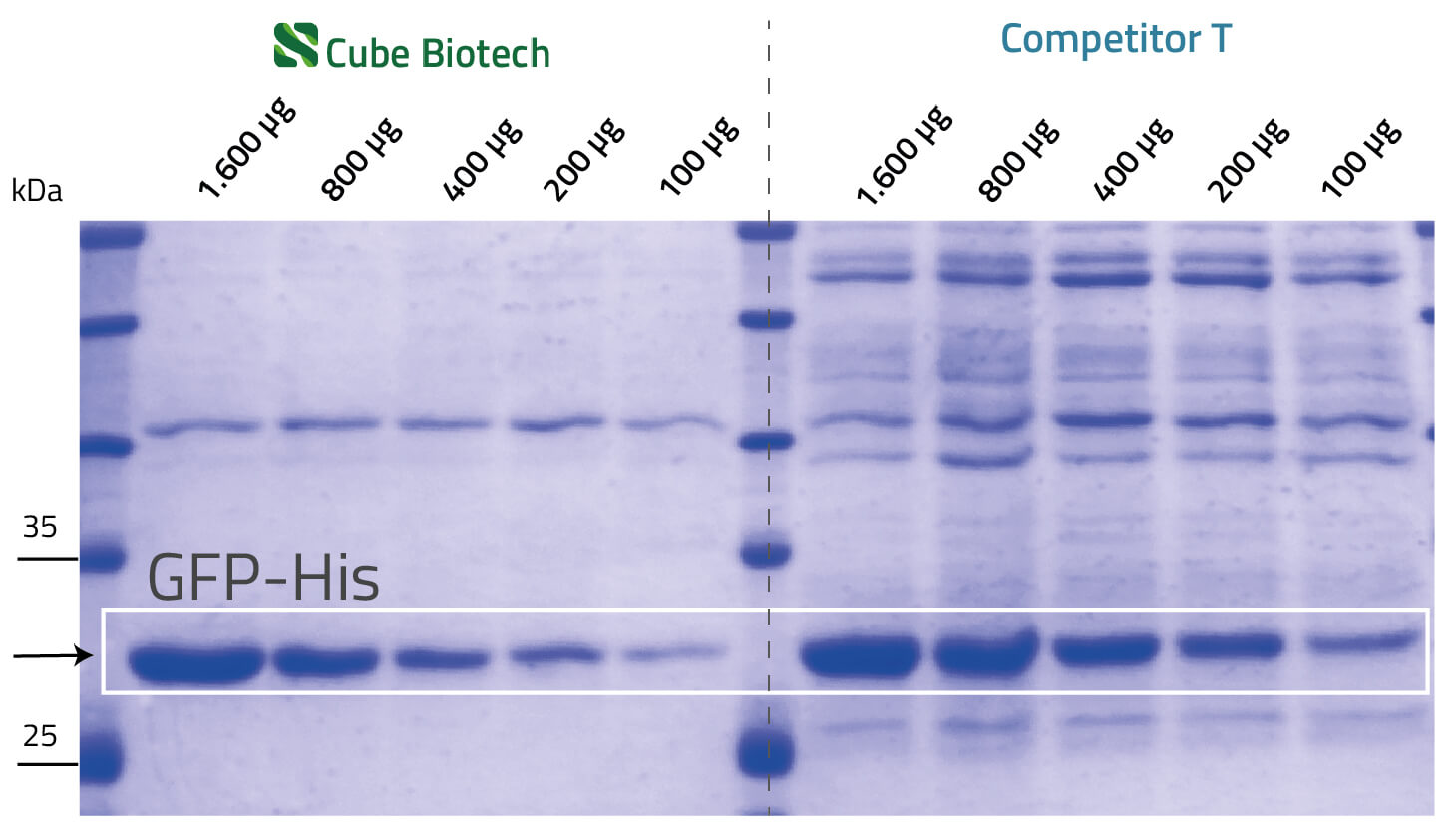
Figure 2: Comparison of the protein purity of a His-tag purification assay. PureCube Ni-INDIGO agarose from Cube Biotech in contrast to Ni-NTA agarose from market competitor "T". Both purifications were performed under the same conditions.

Figure 3: Protein yield of His-tagged protein compared between PureCube Ni-INDIGO based beads and competitor products at 20 mM EDTA and 10 mM DTT.
PureCube Ni-INDIGO-Technology in research

Michael Crone, PhD,
Solena Materials,
London
Westberg, et al. 2020
Jansen-Olliges, et al. 2022
Technology 2: Ni-NTA Affinity
Evolution of Ni-NTA: Beads with the highest ligand density
Ni-NTA Agarose and MagBeads
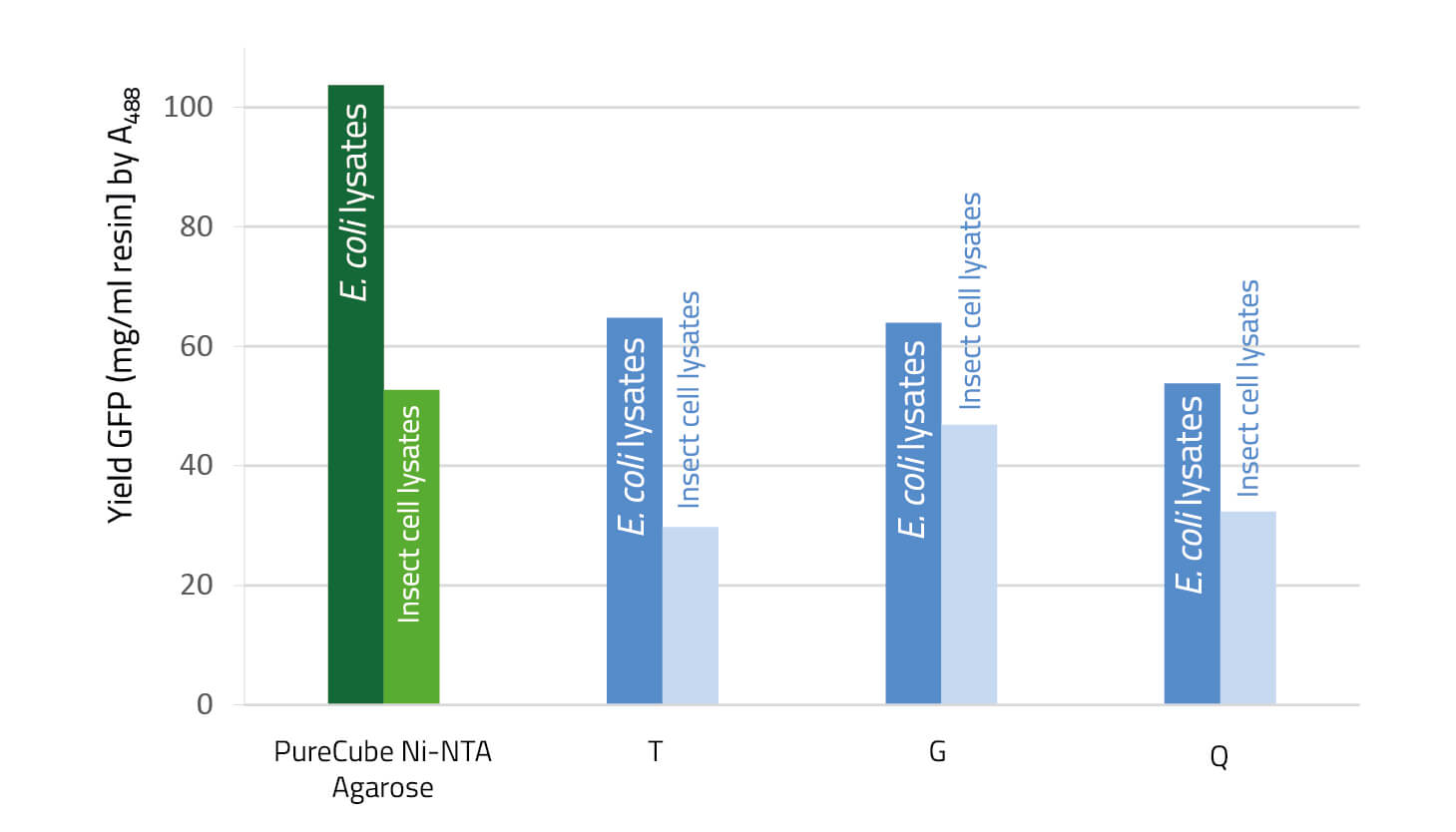
Figure 4: His-tagged GFP was purified from 1. E.coli cell lysates, and 2. Insect cell lysates on His affinity resins in batch format. PureCube Ni-NTA Agarose was compared to conventional Ni-NTA resins of leading competitors, we refer to them as “A“, “B“, and “C“. Recovered GFP was quantified by absorption at 488 nm. Binding E.coli lysates: 50 mM NaH2PO4, 300 mM NaCl, 10 mM imidazole, 1 mM EDTA, 10 mM DTT, pH 7.4; Binding Insect cell supernatants: Sample as is with 10 mM imidazole added; Wash: 50 mM NaH2PO4, 300 mM NaCl, 20 mM imidazole, 1 mM EDTA, 10 mM DTT, pH 7.4; Elution: 50 mM NaH2PO4, 300 mM NaCl, 250 mM imidazole, 1 mM EDTA, 10 mM DTT, pH 7.4
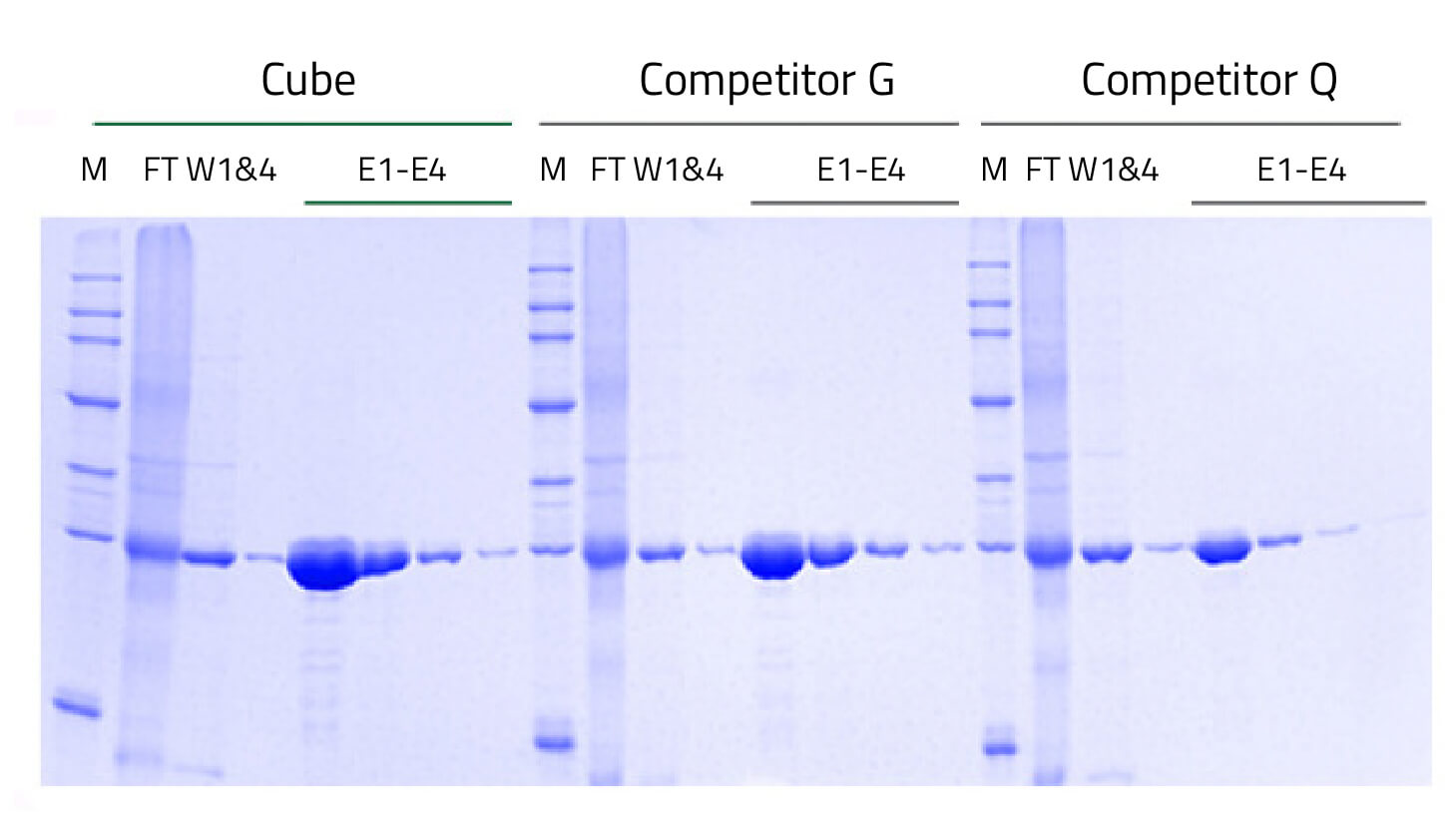
Figure 5: Over 20% more yield obtained with PureCube Ni-NTA Agarose. SDS-PAGE of GFP expressed in E. coli and purified in gravity columns with PureCube Ni-NTA Agarose and Ni-NTA resin from Competitor G, and Competitor Q. 80 mg/mL protein yield was obtained with PureCube Ni-NTA Agarose (E1–E4, Cube) compared to 65 and 48 mg/mL, respectively, with the widely used alternative resins G and Q (E1–E4, Competitor G / Competitor Q).
Technology 3: Rho1D4-tag Affinity
Unmatched purity for low-abundance proteins
HighSpec Rho1D4 Agarose

Fig. 6: Purification of chemokine receptor 4 (CXCR4) using PureCube Rho1D4 Agarose. Total lysate (TL) was solubilized with Fos-Choline-14, and the soluble fraction (SF) was incubated on an immunoaffinity column loaded with rho1D4 antibody. The concentration of eluted CXCR4 ranged 0.6-1.0 mg/mL as determined spectrophotometrically.

"My working group uses rho1D4 resins
from Cube Biotech to purify membrane
proteins. For our applications we need very high purity. The rho1D4-tag provides
high specificity and yield at the same time. (...)
We will certainly use it again in the future! "
Prof. Dr. Jörg Labahn, Group leader at Centre for Structural Systems Biology
Technology 4: Strep-tag® Affinity
The best balance of specificity and purity
StrepTactin® Agarose and Magbeads
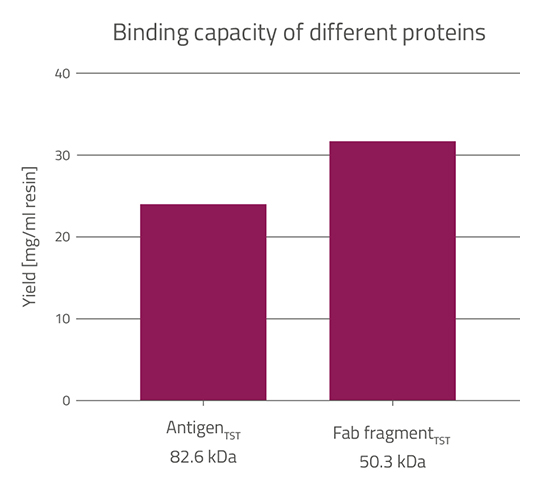
Figure 7: Strep-Tactin®XT 4Flow high capacity binding capacity during purification of CD31 fab fragment (50.3 kDa) and CD56 antigen (82.6 kDa ) fused to Twin-Strep-tag®.
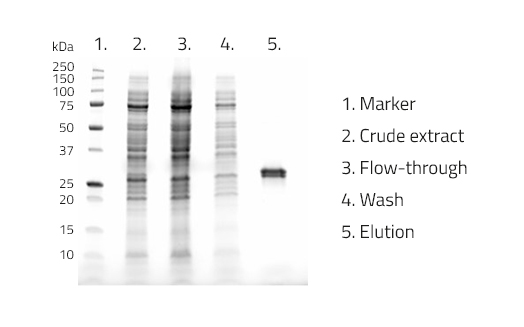
Figure 8: CD31 fab fragment fused to Twin-Strep-tag® was isolated from E. coli lysate with Strep-Tactin®XT 4Flow® high capacity with a purity of 95%.
Technology 5: Active surface groups
Unimagined possibilities with customized beads
Activated Resins & MagBeads
- Amine activated beads
- Carboxy activated beads
- Epoxy activated beads
- Maleimide activated beads
- NHS activated beads
CubePure Epoxy Activated Beads in research
Video of the Intelligent Infusion Masterclass: Thoman Bortecen about CubePure Epoxy Activated Beads using it for s semi-automated workflow for the quantitative analysis of the newly synthesized proteome.
Through the use of novel magnetic alkyne beads, the enrichment of newly synthesized proteins can be performed with a semi-automated protocol using 10-fold lower input.
Reach out to us

Anton Starke
Strategic Partnership Manager
Protein Purification
Anton.Starke@cube-biotech.com
+49-2173-99373-16

Sebastian Lühn
Strategic Partnership Manager
Protein Purification
Anton.Starke@cube-biotech.com
+49-2173-99373-16




